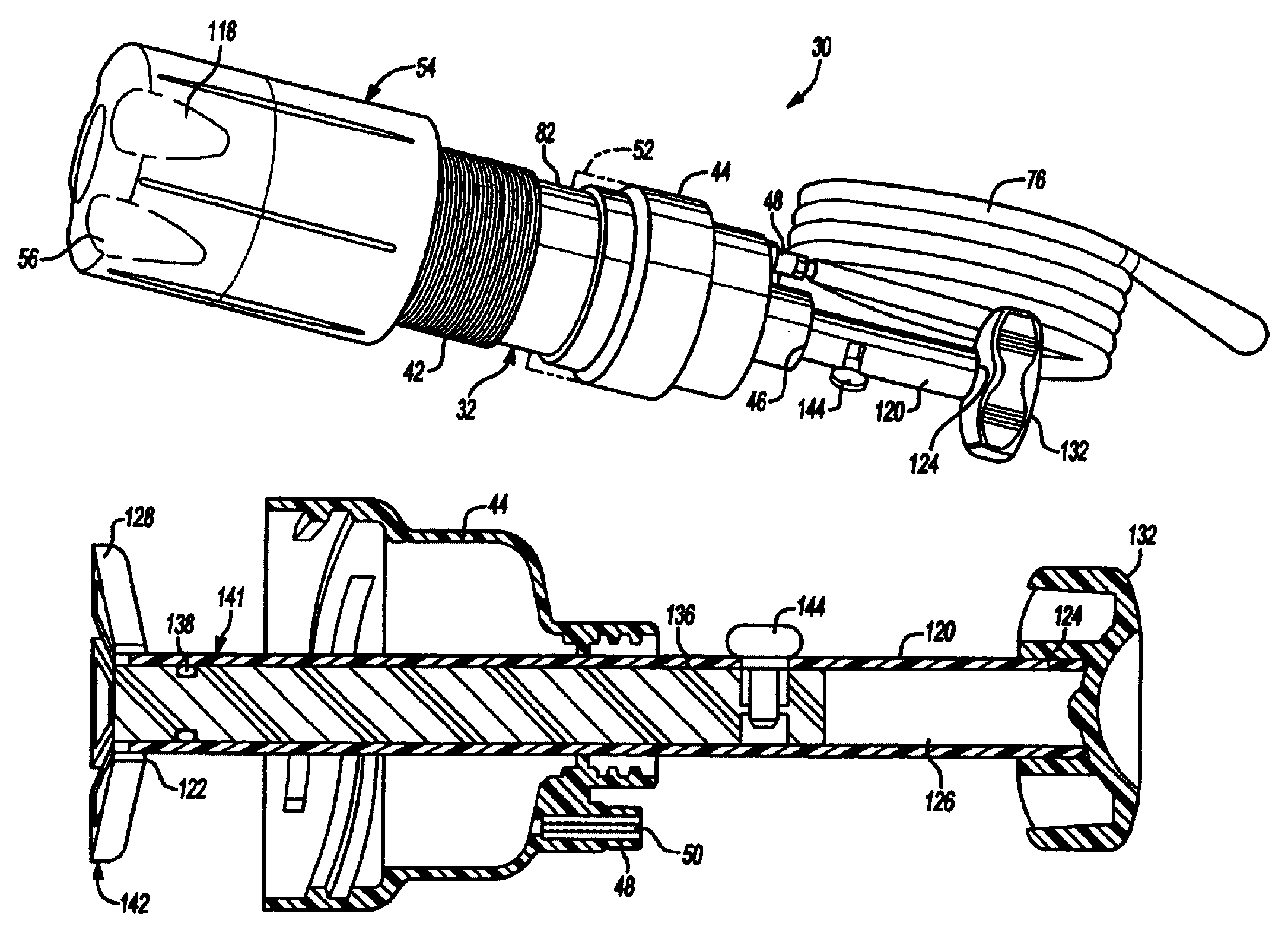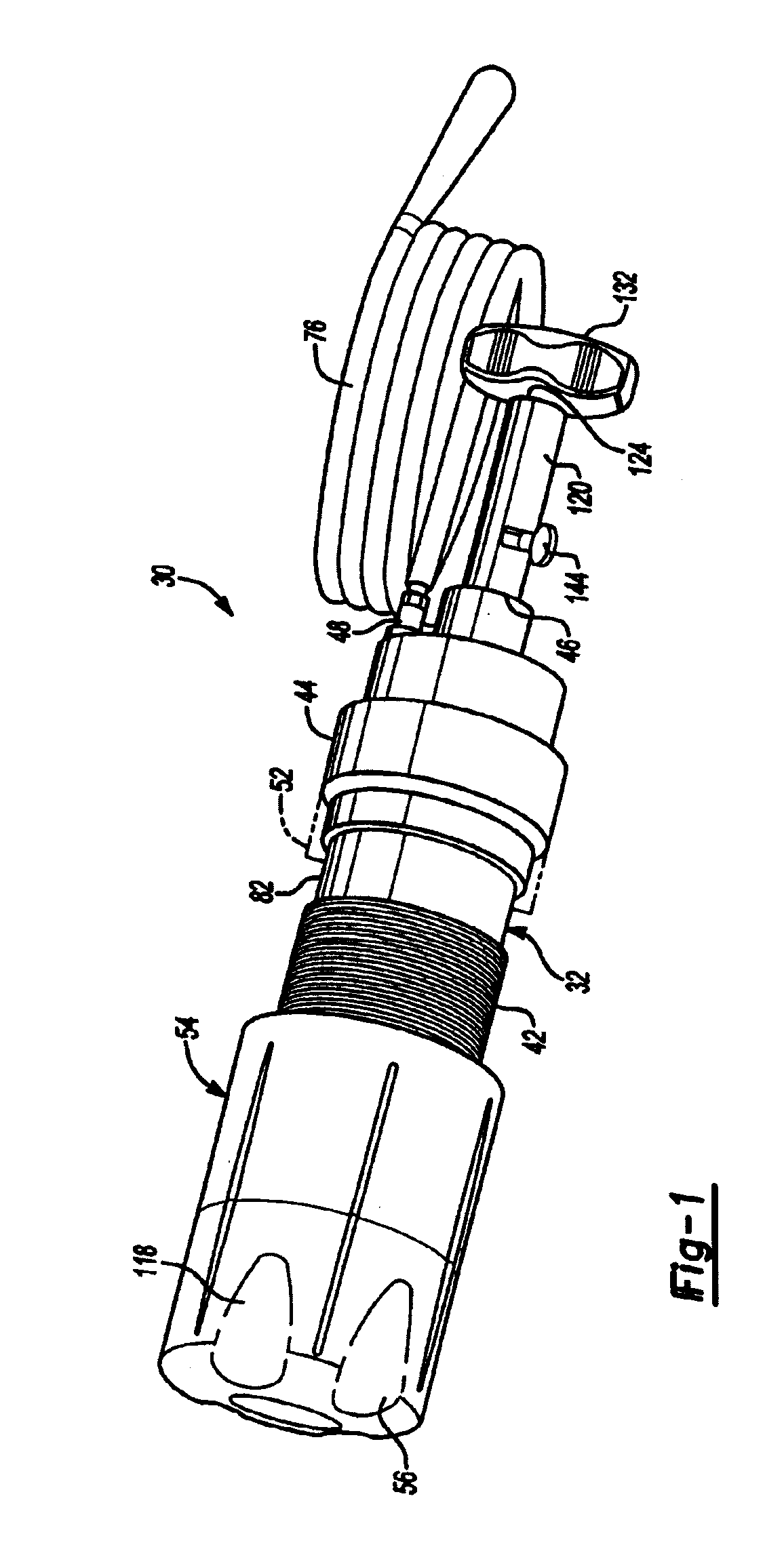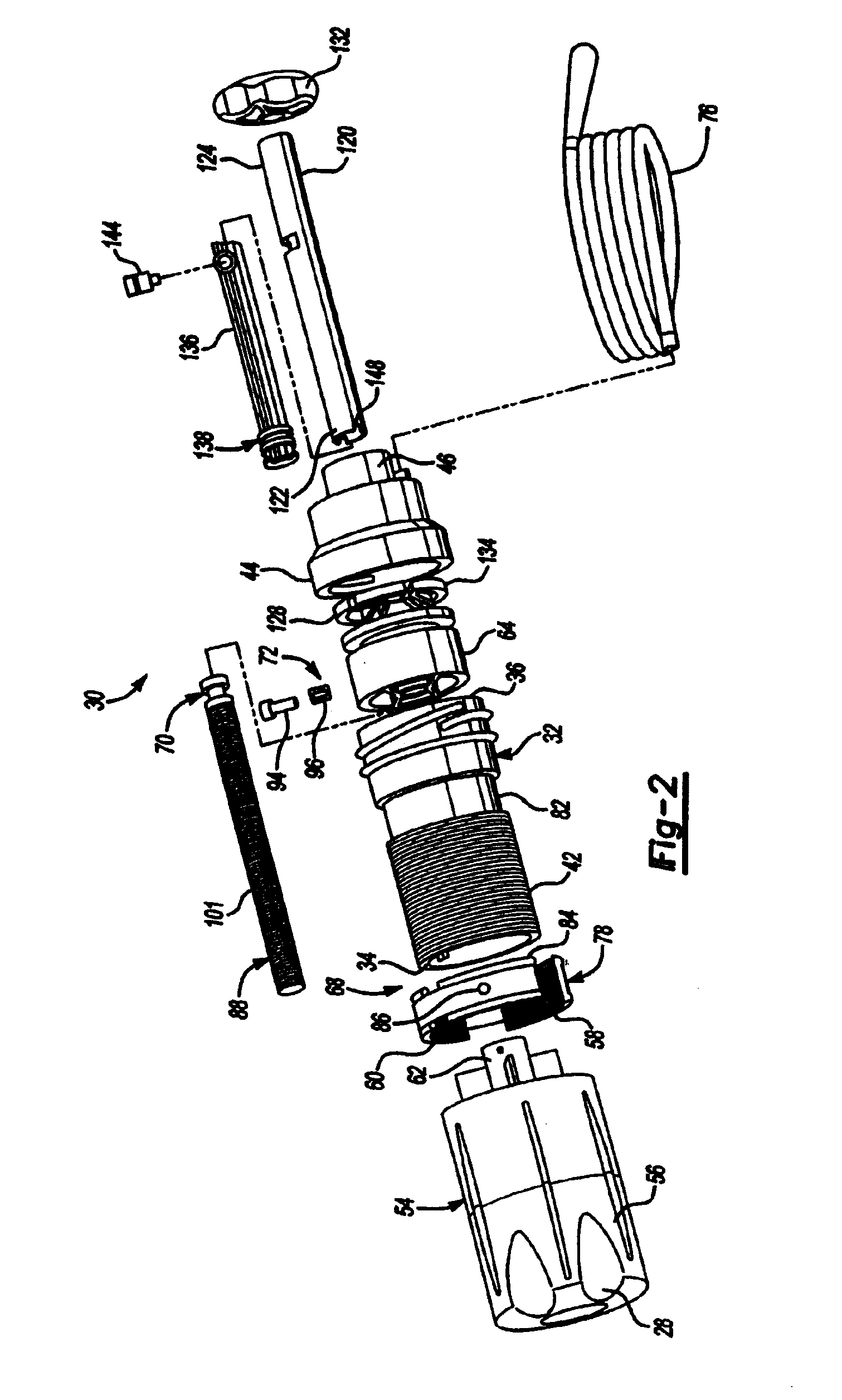Bone cement mixing and delivery device with releasable mixing blade
a technology of bone cement and mixing blade, which is applied in the direction of osteosynthesis devices, prosthesis, teeth capping, etc., can solve the problems of not ensuring the complete delivery of bone cement into the patient, fragments that could contaminate the bone cement, and high undesirable exposure, so as to reduce the introduction of contaminants into the mixture, minimize the handling, and reduce the effect of cos
- Summary
- Abstract
- Description
- Claims
- Application Information
AI Technical Summary
Benefits of technology
Problems solved by technology
Method used
Image
Examples
Embodiment Construction
[0044]Referring to the Figures, wherein like numerals indicate like or corresponding parts throughout the several views, a bone cement mixing and delivery assembly for mixing a powdered copolymer and a liquid monomer to form a bone cement and delivering the bone cement is shown generally at 30. In one embodiment, delivery of the bone cement is performed percutaneously. Percutaneous, as used in the medical field, relates to passing or effectuating the bone cement through the skin. The mixing and delivery assembly 30 functions in three phases comprising a mixing phase, a transfer phase, and a delivery phase. All phases are described in detail below with the transfer and delivery phases described first, followed by the mixing phase. Specifically, FIGS. 5–7 and FIGS. 17–21 show the assembly 30 during the transfer and delivery phases. FIGS. 1–4 illustrate the assembly 30 during the mixing phase.
[0045]The mixing and delivery assembly 30 includes a cartridge 32 (shown separately in FIG. 13...
PUM
| Property | Measurement | Unit |
|---|---|---|
| strength | aaaaa | aaaaa |
| rigidity | aaaaa | aaaaa |
| area | aaaaa | aaaaa |
Abstract
Description
Claims
Application Information
 Login to View More
Login to View More - R&D
- Intellectual Property
- Life Sciences
- Materials
- Tech Scout
- Unparalleled Data Quality
- Higher Quality Content
- 60% Fewer Hallucinations
Browse by: Latest US Patents, China's latest patents, Technical Efficacy Thesaurus, Application Domain, Technology Topic, Popular Technical Reports.
© 2025 PatSnap. All rights reserved.Legal|Privacy policy|Modern Slavery Act Transparency Statement|Sitemap|About US| Contact US: help@patsnap.com



